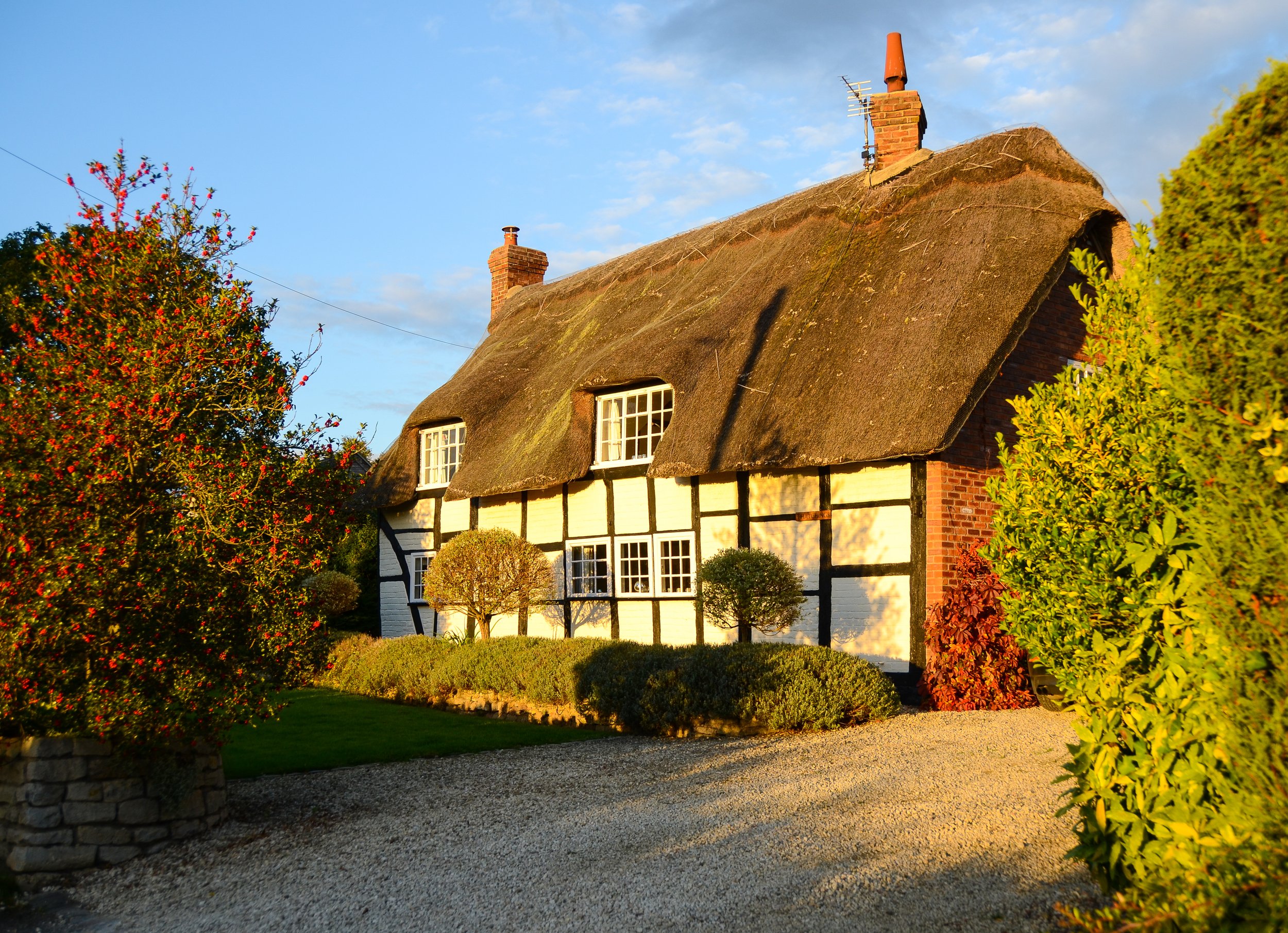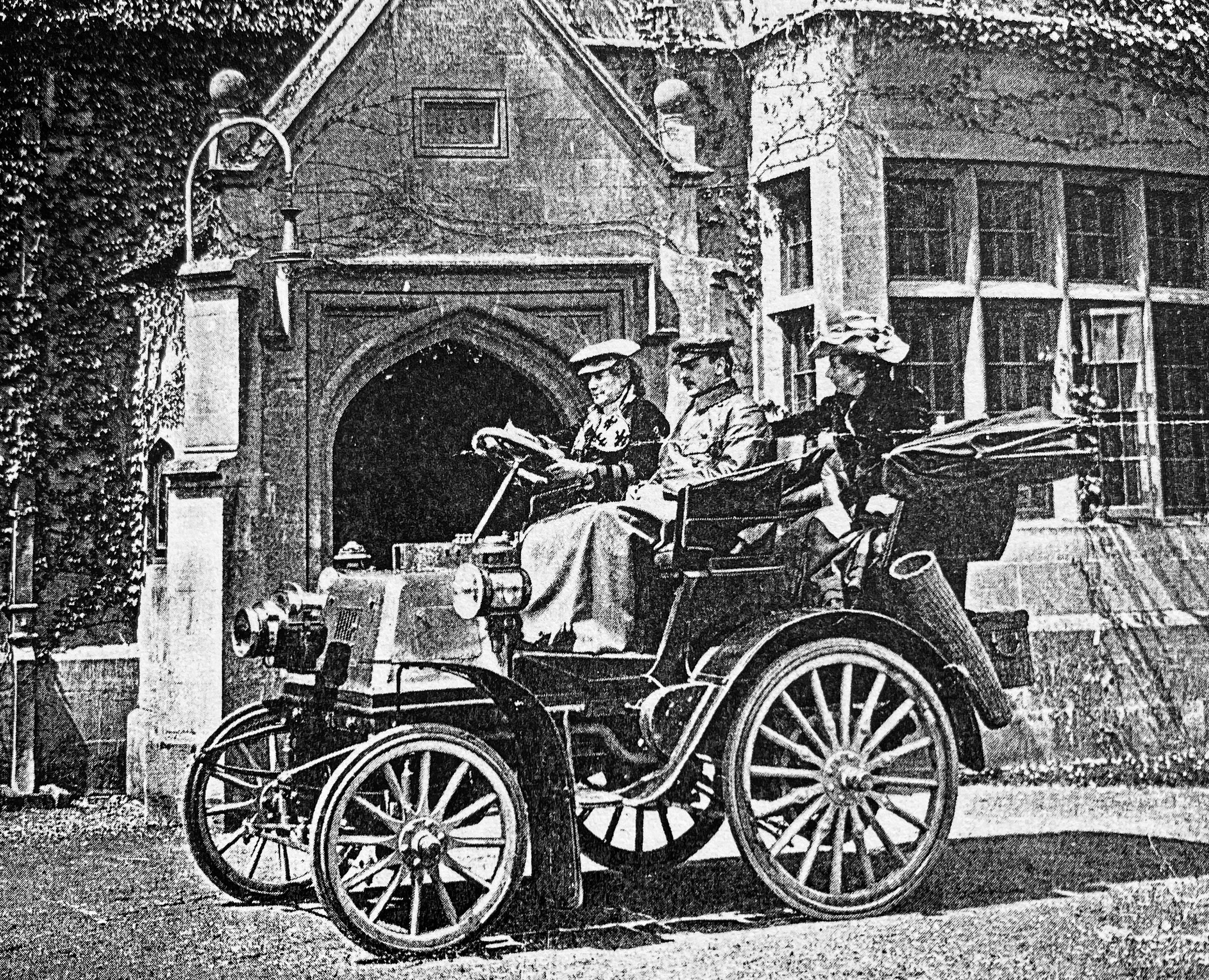About Bredon’s Norton
Village Facts:
Population: 200 (approx.)
Latitude: 52° 2'59.29" N
Longitude: 2° 6'4.81" W
Parish: Bredon
County: Worcestershire
Council: Wychavon
The Large Old Sycamore on Lower Lane,
Bredon’s Norton
Domesday Book
Set on the western slope of Bredon Hill, made famous by A.E. Housman's Poem, the village of Bredon’s Norton dates back to 1086 when it was mentioned in the Domesday Book.
“Durand holds 2 hides also of this manor at Bredons Norton. He has 1 plough and 2 smallholders with 1 plough, a meadow, 6 acres. The value was and is 20 shillings.”
This first recorded evidence of settlement in the area is in the Domesday Book records a settlement and farming at an estate known as "Nortune" or “Nortona” meaning north farm or north settlement. This early settlement would most likely have comprised a number of scattered farmsteads of family groups farming independently and probably trading produce. A “hide” was generally 120 acres.
The availability of a supply of fresh water from the springs emerging from Bredon Hill, and the proximity of fertile land and the Avon River, were likely reasons for settlement at this location.
St Giles Chapel of Ease
By the early 12th Century, the Manor of Bredon's Norton was held by the Bishop of Worcester. The earliest surviving building in the present-day Village is Bredon's Norton Church, heavily restored by the Victorians, but dating from the late 12th Century. It was built as a Chapel of Ease for the main Parish Church of St Giles in Bredon, suggesting that, by this time, there was an established centre of settlement at Bredon’s Norton.
Settlements were by now evolving from the scattering of farmsteads that characterised Roman and early Saxon settlement pattern to farming communities centred on villages. Churches were the focus of these new neighbourhoods, and Bredon’s Norton Church would probably have been at the heart of this early Middle Age community, where today it remains in the Centre of the Village.
Churches were the focus of these new communities. The Church of St Giles would probably have been at the heart of this early Middle Age community at Bredon’s Norton. It remains geographically placed in the centre of the village.
Source: Bredon’s Norton Conservation Area document
Bredon’s Norton Church - St. Giles Chapel of Ease
A wonderful example of a “Cruck” cottage. (Learn more about Cruck cottages here)
Cottages
The village has several pretty timber-framed cottages (called cruck cottages due to their construction) and a 12th century thatched tithe barn (now a home) where it is claimed William Shakespeare acted on his Barn Storming Tour.
Is this where William Shakespeare performed on his Barn Storming Tour?
The Manor House
Bredon’s Norton Manor House is located in a commanding position at the south east corner of the village with wonderful views over the River Avon and The Malverns. Records indicate that there was a house on this site as early as the eleventh century.
According to some sources, the manor was built in the late 1500s by a Sir Thomas Copley (1534–1584) who, according to Wikipedia, was a prominent English Roman Catholic politician and exile of the reign of Elizabeth I. In earlier versions of this website, it was inferred that Sir Thomas Copley travelled with Sir Walter Raleigh and introduced the potato to Evesham Vale farmers and also introduced tobacco to the local area. However, no online corroboration of this can be found and whilst some sources say he died overseas in exile, others indicate he lived in or around the village and there is an inscription in Bredon Church that says: “Thomas Copley, Esquire, whom God took to his mercye, May 20th 1593”. If the Bredon’s Norton Thomas Copley was a “Sir” would the inscription made by his wife have said “Esquire” which was a title of respect for men of higher social rank, particularly members of the landed gentry above the rank of gentleman but below the rank of knight.
Perhaps there were two Thomas Copley’s and time has intertwined their histories..?
If you know more and can clarify, please let us know via the contact page.
Bredon’s Norton 16th century Manor House
Update - January 2024 - Source: Tom Copley
“My information is there were in fact two of them. The Bredon’s Norton one was son of William Copley, the brother of the recusant Thomas Copley who died in the Netherlands. In other words—two related people, but from different generations. The name Thomas was often repeated in different generations, as it is my own name as well. I believe the Bredon Copley did have some connection with Raleigh. Raleigh’s wife may have been related to Copley or at least shared a close connection. I have been trying to track down the descendants of the Bredons Thomas Copley for quite some time.”
The West Terrace of Norton Park - Bredon’s Norton (source ”Footsteps from the Past” by Douglas Jackson)
Norton Park
Norton Park (also known previously as Norton House or Norton Court) was built in 1830 by Misses Penelope and Ann Martin. Built of oolitic stone in the Elizabethan style; it sits on the western slope of Bredon Hill above the village of Bredon’s Norton.
These two ladies were members of the Martins banking family - a somewhat exclusive private London bank eventually absorbed into Barclays.
Around 1892, Norton Park passed to John Biddolp Martin a Banker and Author living at 17 Hyde Park Gate in London. He was married to an American lady called Victoria Woodhull who led a “colourful” life…
Victoria Woodhull
Victoria Claflin Woodhull, later Victoria Woodhull Martin (September 23, 1838 – June 9, 1927), was an American leader of the women's suffrage movement who ran for President of the United States in the 1872 election.
There are many accounts of her life available online. However, this account uses extracts from “Footsteps From The Past” - a compilation of villager’s memories by Douglas Jackson.
“…she was born in the small town of Homer (hence Homer Lodge) in America and was the seventh child of Buck and Roxanna Clafflin. Buck was a jack-of-all-trades and Roxanna was a housemaid and general servant. At the age of 15 Victoria married a man called Canning Woodhull and they had two children Byron and Zula Maud. Some years later the marriage was dissolved and Victoria went on to marry Colonel James Blood but, perhaps unsurprisingly, refused to take his name. The Colonel was a cultured and clever man but had little money. However, he could see that Victoria had a quick mind and he set about teaching her all he knew about the art of public speaking.
Victoria had practised spiritualism from an early age and went on to become a very successful, professional medium travelling widely. She attracted the attention of a Cornelius Vanderbilt whose wife had recently died. He met Victoria and her sister Tennessee and a very profitable partnership developed. Victoria tended to his spiritual needs while Tennessee (who had practised “healing” during her childhood) tended to his physical needs. Vanderbilt, in turn, taught them how to invest in the stock market and they soon amassed a small fortune.
Victoria and Tennessee went on to open a Broker’s shop on Wall Street where they made a large fortune!
Victoria was also politically active and went on to be the first woman to be nominated for the candidacy of the President of the United States although she was unsuccessful.
Victoria continued with her public speaking, mainly on women’s rights and equality. At one lecture in St James Hall. London titled “The Human Body, The Temple of God” she caught the eye of John Biddolf Martin who immediately fell in love with her and was later quoted as saying:
“I was charmed by her high intellect and fascinated by her manner and I left the lecture hall that night with the determination that, if Mrs Woodhull would marry me, I would certainly make her my wife”.
They were married for 17 happy years until John died in 1897. Victoria inherited his estate and continued to live in London until in 1901 she moved to the country estate in Bredon’s Norton where she became one of the “Ladies of the Manor” - a wonderful benefactress to the villagers including giving every child a pair of boots and a small toy at Christmas time.
Despite this, she was viewed as a mysterious and elusive figure in the village only being glimpsed occasionally in her chauffeur-driven limousine. Victoia died in her chair at Norton Park on 9th June 1927 at the age of 89. Her body was cremated and her ashes were scattered in the Atlantic ocean midway between Britain and America.
Victoria Woodhull - Bredon’s Norton
Sir Raymond Priestley - Bredon’s Norton
Sir Raymond Priestley
Sir Raymond Edward Priestley MC (20 July 1886 – 24 June 1974) was an English geologist and early Antarctic explorer. He was Vice-Chancellor of the University of Birmingham, where he helped found The Raymond Priestley Centre on the shores of Coniston Water in the Lake District National Park.
He was born in Tewkesbury, Gloucestershire in 1886, the second son and second of eight children of Joseph Edward Priestley, the headmaster of Tewkesbury grammar school, and his wife, Henrietta Rice. He was educated at his father's school and taught there for a year before reading geology at University College, Bristol (1905–07).
His Antarctic expeditions included a geologist for Shackleton's Nimrod Expedition (1907–09) and as a member of Robert Falcon Scott's Terra Nova Expedition (1910–1913). (Source: Wikipedia)








